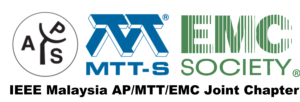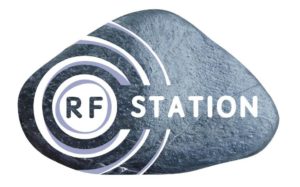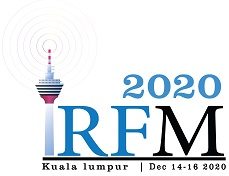Tutorial 1: A Survey on reconfigurable plasma antennas up to millimeter waves.
Today, wireless communications systems have become an integral part of daily life and continue to evolve in providing better quality and user experience. One of the recent emerging wireless technologies is Plasma antennas. It is important to note that Plasma antennas technology has been known for many decades, but has mainly been deployed for military applications. Over the past 10 years, advances in process technologies and low-cost integration solutions have made Plasma antennas a technology to watch and begun to attract a great deal of interest from academia and industry.
In recent years, plasma has been used widely in order to realize reconfigurable antennas or reflectors. Plasma is the fourth state of the matter. When the plasma inside a container (tube) is energized (state ON), the media behaves like a conductive element capable to reflect radio signals like a metal. But when the tube is de-energized (State OFF), the plasma is non-conductor and visible to electromagnetic radiations.
In the literature, plasma is used as a radiator to replace the metallic radiator. The main advantage of using a plasma reflector or plasma antenna instead metallic element is that allows an electrical control rather than a mechanical one.
The tutorial is dedicated to a survey on reconfigurable plasma antennas from HF up to millimeter waves in the world.
First, we will describe the basics of plasma physics, and the model of plasma, secondly, the technological and realization aspects will be described. After we will present examples of many studies of the plasma antennas using for beam steering using reflection or refraction of RF waves in plasma at different bands, antenna beam focusing signal, and beam spreading. The comparison between simulations and measurements will be also presented for many cases.
Finally, major civil, military, automotive and medical applications will be presented.
About the speaker:
MOHAMED HIMDI received a Ph.D. degree in signal processing and telecommunications from the University of Rennes 1, France in 1990. Since 2003, he has been a Professor with the University of Rennes 1, and the Head of the High Frequency and antenna Department until 2013, of IETR. He has authored or co-authored 135 journal papers and over 280 papers in conference proceedings. He has also co-authored 9 book chapters. He holds 46 patents. He supervises and co-supervises more than 50 PhD students.
His research activities concern passive and active millimeter-wave antennas. His research also includes the development of new architectures of antenna arrays and new three-dimensional(3-D) antenna technologies. He was Laureate of the 2d National Competition for the Creation of Enterprises in InnovativeTechnologies in 2000 (Ministry of Industry and Education). In March 2015 he received the JEC-AWARD at Paris on Pure composite material antenna embedded into a motorhome roof for the digital Terrestrial Television reception.
Tutorial 2: Industry Digitalization with SIMULIA-CST Solution.
We are oversaturated with 5G news and promises of the next best thing in technology. Dangerous misinformation is mixed in with the hype. Most consumers understand 5G as the next logical step in cellular technology, offering higher data speed for streaming. Business and industry leaders know it’s important but may wonder how it will impact their business.
There is no doubt that 5G will play a key role in industry digitalization, the ongoing revolution in automated production and operation efficiency. Leveraging the industrial internet of things, 5G will wirelessly connect all parts of the operation and enable digital twins that can predict and optimize performance in real-time. 5G will be a driver of smart manufacturing and industry 4.0 and add value by increasing productivity, reduce time to market, and lower development risk across globally separated operations and supply chains.
About the speaker:
CT CHIANG received his B. Eng (Hons) in Electronics, majoring in Telecommunication in 2001 from Multimedia University, Malaysia. From 2001 – 2002, he worked as Manufacturing Engineer in Sony Electronics Malaysia, designing test fixtures and procedures. He then returned to Multimedia University and obtained M.Eng.Sc degree in Microwave Engineering in 2005. In his Master studies, he was focusing on Anechoic Chamber construction, qualification, Radar Cross Section (RCS) research and Microwave Imaging.
He worked at antenna design engineer for Laird Technology, which focused on antenna in handheld devices. He then started with work with CST in 2007, as Application Engineer. He was involved in technical support for various topics, involving RF / Microwave, EDA, EMC and low frequency applications. In 2013, he worked as Sales and Technical Support Manager, which divided his time between Technical Sales and Support Activities in South East Asia countries. In 2017, he diverted him territory to China and worked as Senior Technical manager where he is taking care of CST product related activities, managing and upbringing technical team to cater for upcoming China market. In 2020, he is tasked to take care of SIMULIA-CST pre-sales team for APAC region. He is actively engaging customers in in key accounts such as Huawei, Samsung, Toyota and etc.
ORGANIZED BY

SPONSORED BY

